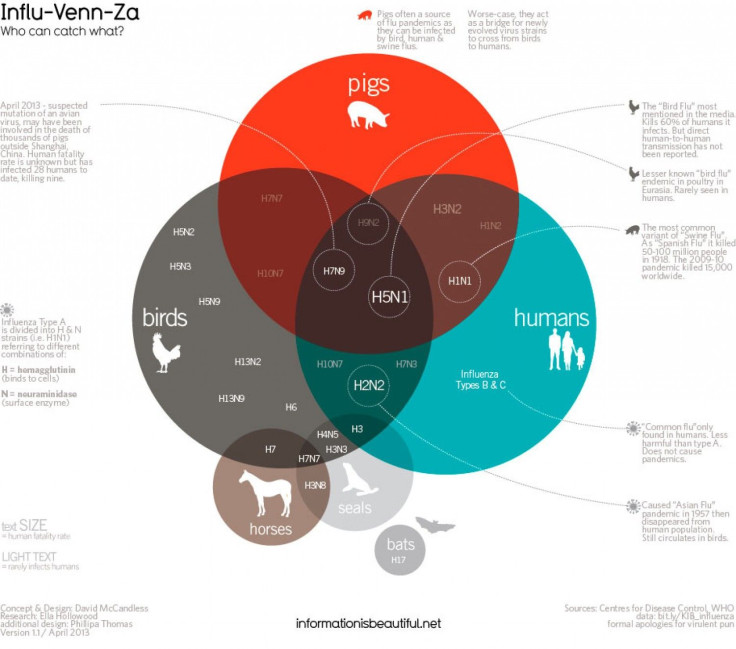'Influ-Venn-Za': Venn Diagram Shows Which Animals Can Catch Certain Flu Strains

Flu: the ominous illness that affects each of us at some point in our lives. It’s a common disease, one that we’re encouraged to get seasonal flu shots for every year, as we’ll likely be exposed to at least a few strains of it at any given time.
But there are so many different types of influenza that it’s often difficult to remember which strains impact humans — and which ones could never infect us, but rather thrive only in birds, pigs, or seals. A lot of these overlap as well, and what better way to visually explain the flu than through a Venn diagram — aptly termed the “Influ-Venn-Za”?
Here’s the breakdown. According to the CDC, there are three main types of influenza viruses: A, B, and C. Influenza A viruses are divided into subtypes based on what types of proteins they have on their surface — hemagglutinin (H) and neuraminidase (N). There can be 18 different hemagglutinin subtypes (H1-H18), and 11 different neuraminidase subtypes (N1-N11).
According to the graph, Influenzas B and C can only be found in humans, and they don’t cause pandemics (they’re generally referred to as the “common flu”). Humans share the ability to be infected with H1N1 — the most common form of swine flu (which had a pandemic in 2009-2010) — with pigs. H5N1, meanwhile, is the “bird flu” we’re all familiar with in the media, which is capable of infecting birds, pigs, and humans. Humans don’t seem to be able to transmit it to one another; however, they can only get infected with it from birds or pigs. The other two main strains that affect pigs, birds, and humans include H7N9 and H9N2.
Influenza viruses are constantly changing and mutating — either in antigenic drift (when they occur slowly) or antigenic shift (when they occur suddenly). Their changes can impact how they’re transferred from animals to humans. To see how the influenza virus infects the body, watch this video.




























